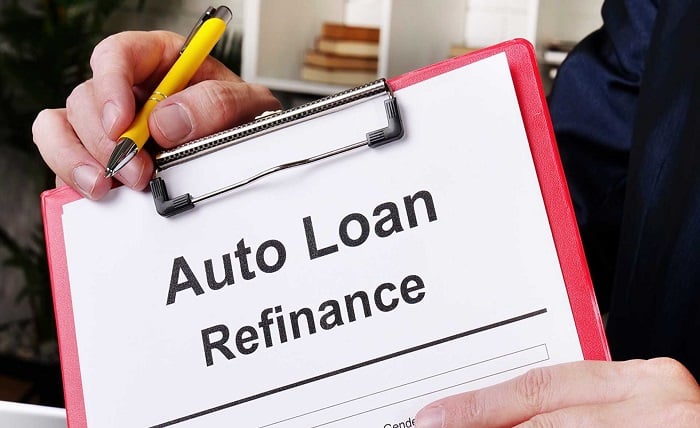Billån Refinansiering: Understanding Car Loan Refinancing Essentials

Car loan refinancing is the process of replacing an existing vehicle loan with a new renegotiated one. Normally, the new facility should come with better terms like a lower interest rate. Refinancing can save borrowers significant money over the duration of the credit plan. It is essential therefore to understand the nitty-gritty of debt restructuring so that informed decisions that tally with your financial goals can be made.
An advantage of debt refinancing is it helps you pay off your loan faster by reducing the remaining term. You can also save hundreds of dollars in interest charges under the renegotiated financing plan. It also gives you the latitude to switch – if you want – from a variable to a fixed interest rate.
As we progress in this article, we’ll be exploring the essentials of car loan refinancing and demonstrate how to determine if refinancing is the right option for your situation. Thereafter, we’ll discuss how to qualify for, and find the best rates and terms around. In the concluding sessions, we’ll provide you with a stepwise guide while examining the pitfalls you must avoid while during the entire process.
Determining If Car Loan Refinancing Is Right for You
Refinancing your car loan can be a wise financial decision. However, carefully evaluate your specific circumstances to know if you’re to proceed with it. Below are some of the areas that you should focus on:
Assess Your Credit Score
One criterion that qualifies you for refinancing is your credit score. Well, that is if it has improved appreciably since you took out the initial loan. Also, refinancing could help you get a lower interest rate and potentially save you a huge amount over the finance duration. However, for a situation where the score is unchanged or decreased, refinancing may not be advantageous. This is because, lenders may offer you higher interest rates or, outright deny your application altogether.
Evaluate Interest Rate Changes
Interest rates are not often stable, they are always fluctuating. With unstable interest rates, especially if they’re higher than what it was when you took the credit, refinancing won’t be beneficial. When market conditions are not favorable consider the break-even point. The break-even point is the point where the savings from refinancing outweigh the costs associated with the process.
Review Your Loan Term
Debt refinancing allows adjustment to the length of the credit. Individuals in good financial standing may opt for a shorter loan term, even though it comes with the disadvantage of higher monthly payments, but less interest paid over the loan term. On the other hand, in times of financial difficulties, extending your loan term can lower your monthly payments. The disadvantage however is having to pay more in accruing interests over time.
In addition to all that has been shared so far, you can read this article to garner more knowledge on how to know if you’re ready for vehicle refinancing.
How to Qualify for Car Loan Refinancing

Ones you’ve determined that it’s the right thing for you to do, qualifying for the credit facility becomes the next key consideration. Some critical factors have been provided to guide you below:


- Credit Score Requirements: Lenders when evaluating your application want to see that your credit score is within the minimum threshold range of 600 to 700 on the average. However, it is worth noting that the specific requirements differ, depending on the lenders.
- Loan-to-Value Ratio (LTV): The loan-to-value ratio is the loan that is yet to be paid compared to the current market value of your vehicle. Many lenders are inclined towards a lower LTV ratio because it portends lower risk for them.
- Income and Employment Requirements: Proof of income and/or ability to repay the loan will be demanded from you. This is to assist in the assessment of your monthly repayment capabilities. Therefore, documentary proofs such as tax returns, pay stubs, etc. will need to be tendered.
Finding the Best Rates and Terms for Your Auto Loan
There are methods for easily finding the best going terms and rates in the market. Read on to know the recommended ways you can best get information on your auto loan deals.
Shop Around with Multiple Lenders
You’ve to shop around and compare offers from various lenders to know the best deal that’s available. Shop along the following possible lines:
- Online Lenders: check online lenders; they often offer competitive rates and a streamlined application process. This makes comparison of multiple options easier.
- Traditional Banks and Credit Unions: These institutions are sometimes overlooked – don’t! Check them out as they may provide attractive rates, especially if you have an existing relationship with them.
- Loan Marketplaces: Loan marketplaces simplify the shopping process by allowing you to receive multiple quotes from different lenders by submitting a single application.
Negotiate for Better Terms
You can get better deals from lenders if you negotiate terms skillfully from the position of strength and information. Tune up your negotiation with the following punchlines:
- Leverage Competing Offers: use the multiple offers on the table as a negotiating leverage to demand improved terms from lenders.
- Highlight Your Creditworthiness: If your creditworthiness is good, emphasize it and use it to increase your bargaining power. However, if it is less than ideal, adding a surety or co-signer with good credit will bolster your application terms.
Do a Careful Review of the Agreement
Here are the critical things you should take note of:
- Review the fine print: thoroughly check all the details of the agreement before accepting it or appending your signature. Ensure you’re ok with the terms and conditions spelled out in the final document.
- Understand the Repayment Schedule: Ensure that the new debt’s repayment schedule aligns with your financial capabilities and goals.
- Check for Prepayment Penalties: Check for and avoid stringent prepayment penalties. Stringent or hidden penalties can limit your ability to pay off the credit early. If not properly checked, it can even hinder the possibility of refinancing again in the future.
Step-by-Step Guide to Refinancing Your Car Loan
Now, our concern shifts to helping you go through the refinancing journey with relative ease.
The first step when you’re in this situation is to gather all the documents you need for this process. Documents like: your current loan statement, proof of income (such as pay stubs or tax returns), and personal identification documents. Other documents that provide information about your vehicle (make, model, year, mileage, and VIN) will also be required.
Next, shop around, check various offers from lenders and compare them. This can be done in various ways such as contacting banks directly, researching credit unions, and online lenders. You can also visit websites like: www.besterefinansiering.no/refinansiering-av-billån where information on this subject is freely provided, or use loan comparison websites. To help you make an informed decision, carefully compare their figures (on interest rates, fees, etc), terms, and conditions.
After careful evaluation of the available options, choose the lender that offers the most favorable terms and rates. Complete the application process, and submit all the required information and documents. Ensure to provide accurate and up-to-date information to avoid delays or issues. Upon approval of your application, read through it carefully and only append your signature when you’re satisfied with all the content of the agreement or document.
Avoiding Pitfalls in the Refinancing Process
Although car loan refinancing is beneficial, awareness of the potential pitfalls will help avoid unfavorable outcomes. Let’s consider some of these pitfalls:
Look out for hidden fees that can mitigate the savings you expect from refinancing. For instance, some lenders may charge origination fees upfront – check for it. This fee is the cost of processing the new loan and can be a flat fee or a percentage of the amount taken.
On loan extension, the repayment term can be lower per month, whereas, it may result in paying more interest over time. Loan term extension requires financial discipline to ensure you avoid the almost endless cycle of continuously refinancing the debt. It prolongs the whole deal unnecessarily.
Timing also matters; how and when you trigger the process will impact the potential terms and savings of the facility to be procured. For example, interest rates aren’t stable, they fluctuate, so, it is essential to monitor market conditions and refinance when the rates are favorable. Also, take cognizance of your life situation like employment, healthcare, education, or credit score; they impact the refinancing plan one way or the other.
Conclusion
Refinancing your car loan can be a strategic financial move if carefully approached. You can determine if refinancing suits your goals by doing a thorough assessment of your creditworthiness, monitoring interest rate fluctuations, and understanding the impact of the credit terms.
However, to help you get the best deal, you must diligently research, and compare the lenders near you. Thereafter, to lock in a good contract you’ll require appreciable negotiation skills in addition to the ability to give careful review of the agreement before appending your signature.
However, potential pitfalls exist, like hidden fees, extended loan terms, and unfavorable market conditions which must be avoided. To make informed decisions and maximize your savings, you need a good understanding of how the process works.




